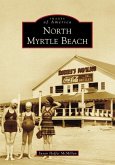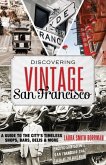From the time the first handful of night lunch wagons served up their simple fare on the streets of the North Shore in 1890, residents from every social and economic standing have frequented these familiar beacons of hospitality and their descendants, the diners. Over the course of the sixty years that followed, the area's manufacturing, transportation, and recreation centers provided the hungry clientele who helped spur the metamorphosis of the humble lunch wagon into the sleek, efficient, and friendly eatery known as the diner. Diners of the North Shore is a fascinating collection of many previously unpublished images from the golden age of the diner. Bearing names such as Hesperus in Gloucester, Lafayette in Salem, and Suntaug in Peabody, these eat-on-the-run oases provided their customers with not only a square meal but also an atmosphere as welcoming as one's kitchen. From the primitive Night Owl lunch wagon to the art deco-inspired Sterling Streamliner, Diners of the North Shore showcases each diner's unique character, along with the colorful personalities who ran them.
Bitte wählen Sie Ihr Anliegen aus.
Rechnungen
Retourenschein anfordern
Bestellstatus
Storno








